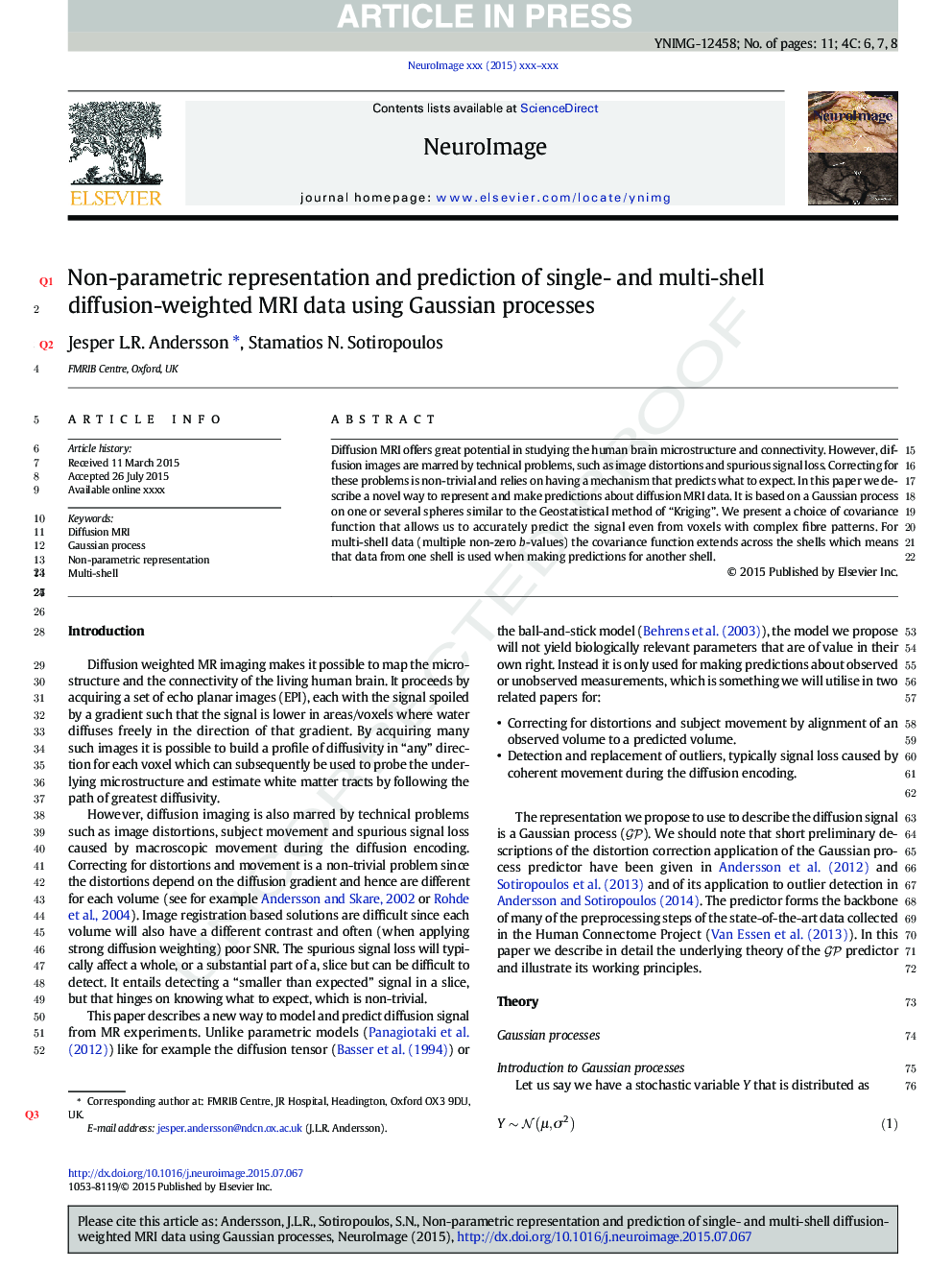| Article ID | Journal | Published Year | Pages | File Type |
|---|---|---|---|---|
| 6024652 | NeuroImage | 2015 | 11 Pages |
Abstract
Diffusion MRI offers great potential in studying the human brain microstructure and connectivity. However, diffusion images are marred by technical problems, such as image distortions and spurious signal loss. Correcting for these problems is non-trivial and relies on having a mechanism that predicts what to expect. In this paper we describe a novel way to represent and make predictions about diffusion MRI data. It is based on a Gaussian process on one or several spheres similar to the Geostatistical method of “Kriging”. We present a choice of covariance function that allows us to accurately predict the signal even from voxels with complex fibre patterns. For multi-shell data (multiple non-zero b-values) the covariance function extends across the shells which means that data from one shell is used when making predictions for another shell.
Related Topics
Life Sciences
Neuroscience
Cognitive Neuroscience
Authors
Jesper L.R. Andersson, Stamatios N. Sotiropoulos,
